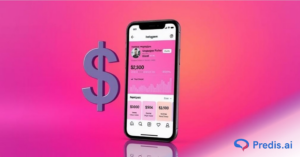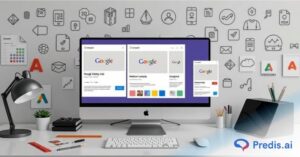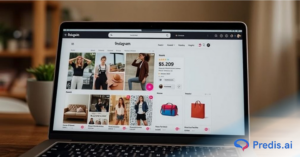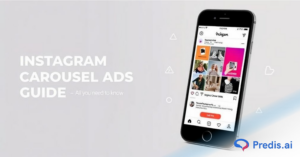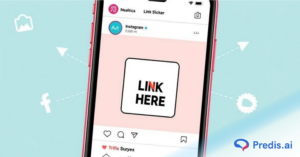Have you ever felt annoyed seeing the same ad over and over again? That’s exactly what your audience experiences when frequency capping isn’t in place. In this guide, we’ll break down everything you need to know about using frequency capping in display ads to prevent ad fatigue, improve performance, and make your ad dollars work smarter.
What is Frequency Capping in Display Ads?
Setting a frequency cap will limit the number of times your display ad shows up to the same person in a certain amount of time. This control is very important to make sure that users don’t see too much of the same material when you’re running ads on Google Display Network, Meta, or programmatic platforms.
For example, you could limit the number of times a person sees your banner ad each day. Instead of letting them see it 15 times, you could only let them see it 3 times. This cuts down on waste and helps the brand keep a good reputation.
What is Ad Fatigue and Why Does It Happen?
A user is said to have ad fatigue when they feel tired or sick of seeing the same ad over and over again. A decrease in engagement, a decrease in click-through rates (CTR), and ultimately a decrease in conversions are the results of this activity.
Some of the indications are as follows:
- A sudden decline in CTR throughout the course of time
- A greater number of bounces
- Ads or negative feedback can be hidden.
- Reduced return on investment (ROI) despite deep impressions
As a result, users have a strong desire for freshness. This phenomenon, which is sometimes referred to as banner blindness, occurs when your ad continues to appear without any changes being made. This is where frequency capping plays an important role in display ads.

The Relationship Between Frequency Capping and Ad Fatigue
It is a fact that overexposing your audience is equivalent to shouting at someone till they stop listening to what you have to say.
If you do not implement frequency capping:
- You run the risk of over-delivering impressions
- Your potential clients are more likely to become irritated as a result of your actions.
- Disengaged users are a waste of advertising dollars.
If you use frequency capping:
- Controlled exposure can be achieved by using frequency capping in display ads.
- The user experience is improved.
- You ensure that your ads remain fresh and relevant.
According to a study conducted by Improvado, campaigns that had optimized frequency caps experienced up to 40% more engagement than those that did not have such caps.

Benefits of Limiting the Frequency of Display Ads
The following are some of the reasons why frequency capping is such a valuable tool:
- Helps to Prevent Ad Burnout
- Improves Efficiency of Ad Campaigns
- Improves Brand Recall Without Being Annoying
- Cuts down on Unproductive and wasted Impressions
- Your Daily Advertising Budget Is Optimized
Furthermore, here is the kicker: frequency capping results in longer-lasting audience trust, which ultimately pays out in the form of conversions.
How to Set the Right Frequency Cap?
Although there is no universal solution, the following represents a decent place to begin:
| Campaign Type | Suggested Frequency Cap |
|---|---|
| Retargeting Ads | 3–5 times per user/day |
| Prospecting Ads | 2–3 times per user/week |
| Branding Campaigns | 5–7 times per user/week |
Always test different caps and monitor user behavior. Sometimes, less is more.
How to Implement Frequency Capping on Major Ad Platforms?
Let’s have a look at how to modify the frequency caps in your advertising accounts:
Google Display Network (GDN)
- To access GDN, log in to your Google Ads account through the Google Ads website.
- In the Google Ads account, click on Campaigns
- Proceed to the settings for your campaign.
- Select a display campaign you want to add a frequency cap to.
- Navigate to the “Additional Settings” section.
- Select Frequency management and then choose how often your ads show to the same user.
- Establish a limit for each day, week, or month.
- Click on Save!
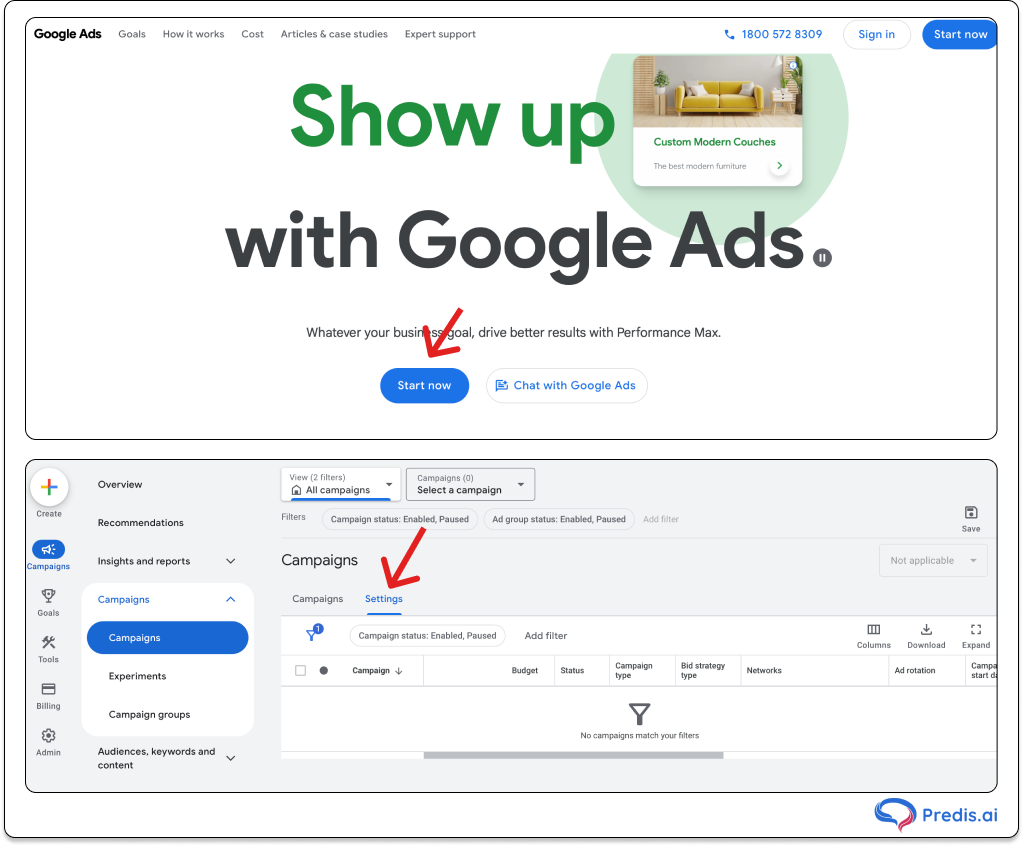
Using Facebook and Instagram for Meta Ads
Although Meta does not have direct frequency caps, you can control distribution by the following means:
- Utilizing the Reach and Frequency purchasing type
- Limiting the number of impressions for each ad set
- Utilizing Ads Manager by Meta.
Programmatic Platforms (DV360, The Trade Desk)
- DV360 and The Trade Desk are two major platforms in the programmatic advertising space.
- Both user-level and campaign-level capping are possible thanks to the advanced controls.
- For even greater granularity, you may additionally segment your audience based on the device, region, and type of audience.

How to Monitor & Optimize Frequency Capping Settings?
Just putting it in place and forgetting about it is not enough. This is what you should keep an eye on:
- CTR Graphs against Frequency Graphs can be checked to see if CTR is improving with a lower frequency.
- Comparison of “impressions per user” to “conversion rate.”
- After changing such caps, the cost per result
- If your Cost Per Acquisition (CPA) is lower with a reduction in frequency, then that indicates an efficient usage of budget.
- Brand lift and positive perception about your brand are something that can happen when users don’t repeatedly see your ads.
- Reach should not be impacted. The ultimate goal here is to reach more people and just curb the frequency.
Put A/B testing to use:
- Test Cap A: three days
- Test Cap B: five days
- The measurement that results in improved engagement without an increase in costs.
Common Mistakes to Avoid with Frequency Capping
- Underexposure results in missed conversions, and this is because of setting the caps too low.
- Every campaign has the same cap.
- Ignoring ad creatives, frequency limitation is not a solution to poor design.
- No variation in messaging or audience segmentation
To get the most out of your capping approach, you should steer clear of these potential problems.
Advanced Strategies To Implement
Some advanced strategies that you can implement to further boost the performance of your ads are:
- Dynamic adjustment, where you can show the ads more to people who engage with it and restrict it to viewers who are not interested.
- Choose the frequency based on where the audience is in the funnel. For example, new users require a minimum of 7 touchpoints to engage with the brand, whereas a present customer does not require that much.
- Use historical data and machine learning algorithms to find the best frequency range for your customers
Top Tools to Help You With Frequency Capping
The following is a list of tools that help to streamline the process:
- Google Ads Manager: Simple cap settings are available.
- AdRoll: A smart cap with retargeting flows is available on
- DV360: Control over audience exposure at the enterprise level is provided by
- Improvado: This tool provides the visual dashboards for frequency and fatigue analysis.
For the purpose of observing real-time behavior after exposure, heatmaps and scroll tracking technologies such as Hotjar can be utilized.
Expert Tips for Smarter Frequency Capping
- Starting on a tiny scale: Start at three times each day and increase it only if necessary.
- Segment by funnel stage: Users at the top of the funnel require fewer impressions.
- Rotate creatives: It maintains a sense of novelty even if the frequency remains the same.
- Use sequential ads: Tell a story across a number of different touchpoints rather than repeating the same ad.
The Future of Frequency Capping: An Era of Artificial Intelligence and Privacy
The frequency control will rely increasingly on the following when cookies become less common:
- First-party information/data.
- Forecasts of user behavior based on AI (artificial intelligence)
- Instead of tracking users, contextual targeting is being used.
There are currently platforms that are experimenting with dynamic capping, which involves altering limitations based on the amount of time users spend on the platform. It is anticipated that this will continue to expand beyond the year 2025.
Conclusion
When it comes to display ads, frequency capping is not merely a performance tweak; rather, it is a strategic need. Through the utilization of the appropriate cap, the rotation of creatives, and the monitoring of user behavior, you can prevent ad fatigue and transform impressions into actual results.
Are you prepared to update your display ads? Sign up and make display ads with Predis AI. After which, all that is left to do is optimize your frequency cap, and you’re all set to see your engagement skyrocket!
FAQ:
If you do not cap the frequency, your audience might repeatedly see your ads. This can cause them to have banner blindness, irritation, and can even cause them straight out ignore your ads, which can be bad for business.
Ad fatigue happens when users repeatedly see the same ad. By controlling the frequency with which they see your ads, you can keep it from being intrusive.



